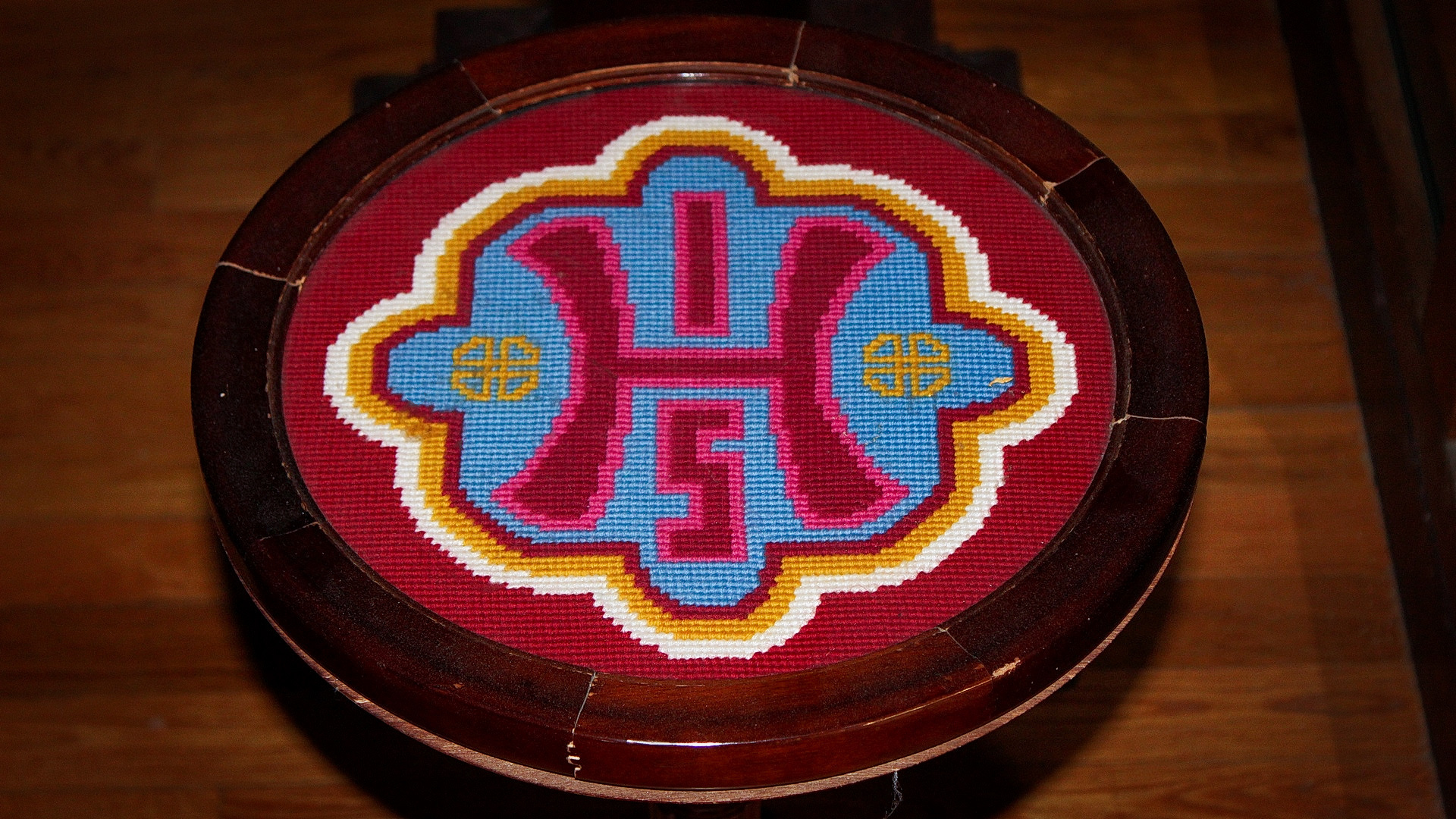The All Saints’ 1982 Centennial celebration included a huge needlepoint project. A group of thirty All Saints’ parishioners researched materials, planned the sizes, designed patterns, chose the ideal stitch and some learned to needlepoint all in order to make the altar kneelers, chair covers and baptismal font side table cover. The kneelers have been in use and have enhanced All Saints’ worship services since their completion in 1983.
CANVAS – Swiss cotton
STITCH – Trammed Gros Point
YARNS – Wool imported from France
ART – Christian symbols and church and state seals, Most all found in the All Saints’ Chapel
There are many crosses and Fleur-de-lis used on the kneelers. The cross is a familiar symbol for Jesus and sacrifice. The Fleur-de-lis with three parts united as one is a symbol of the Trinity. This symbol is on top of the rood screen that Wilson Waters brought from Chester Cathedral, England.
Stitchers:
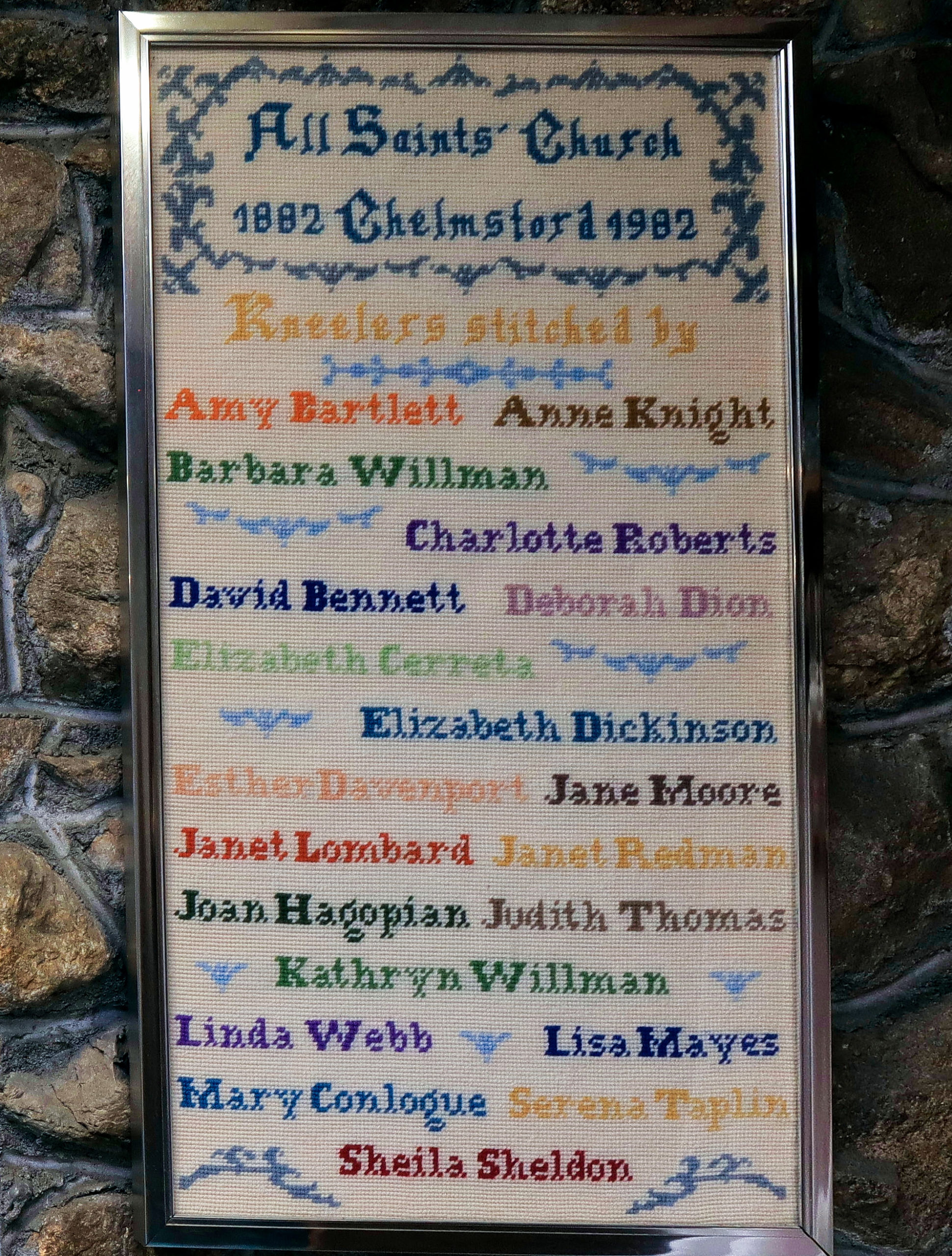
Four Evangelists
St. Matthew – Saint Matthew’s symbol is that of a winged man, representing the content of his gospel and emphasizing the human side of Jesus’ life.
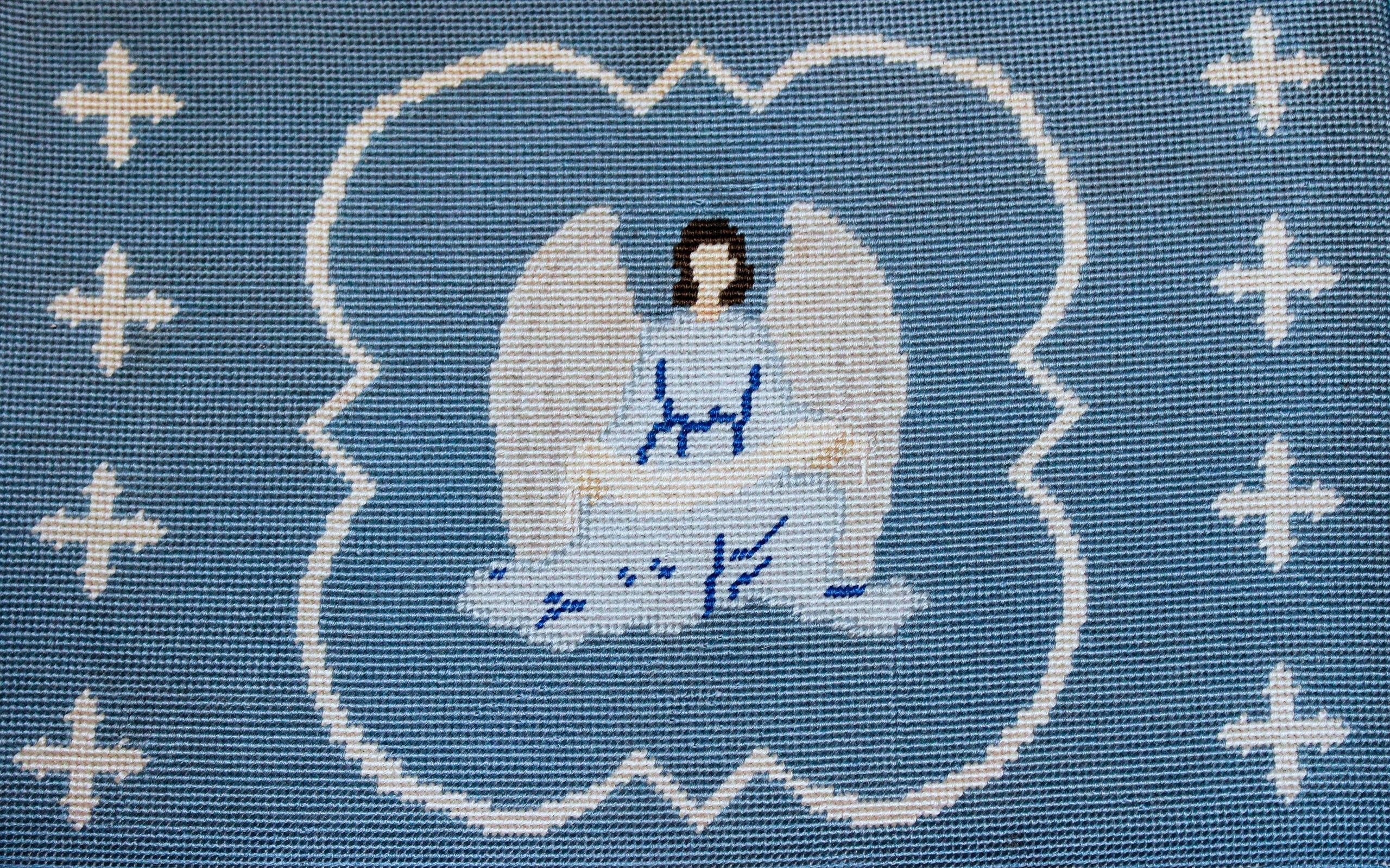
St. Mark – Saint Mark’s symbol is the winged lion because he emphasizes the royalty or kingship of Jesus in his gospel. The lion, the “King of Beasts”, is a reflection of the kingly nature of Christ.
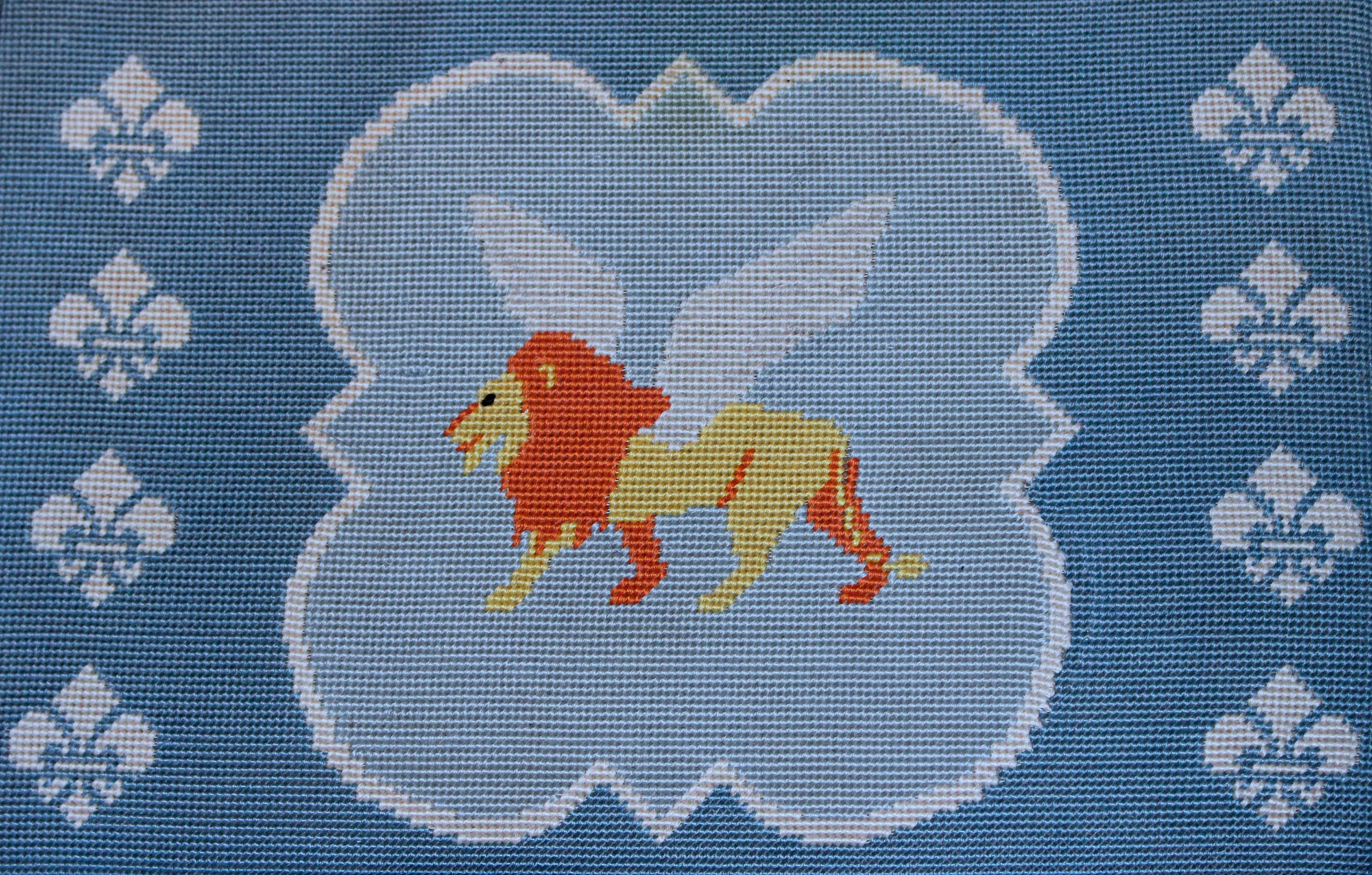
St. John – Saint John’s symbol is the winged eagle. The spirit of Christ caught by the writing of St. John lifts the soul and mind of the reader like an eagle in flight.
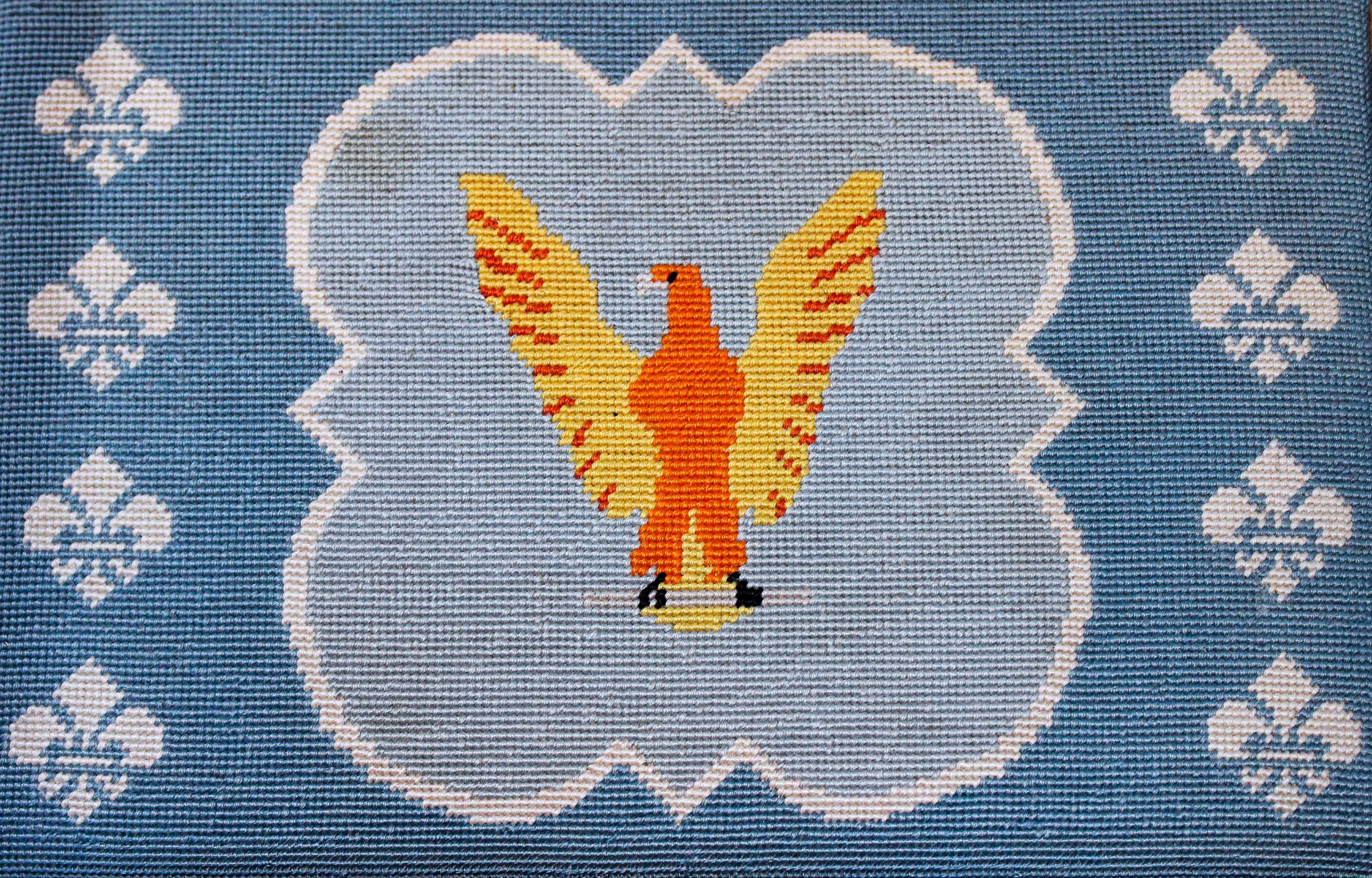
St. Luke – Saint Luke’s symbol is the winged ox. The ox was a common beast of sacrifice and Luke emphasizes the sacrificial nature of Christ in his gospel.
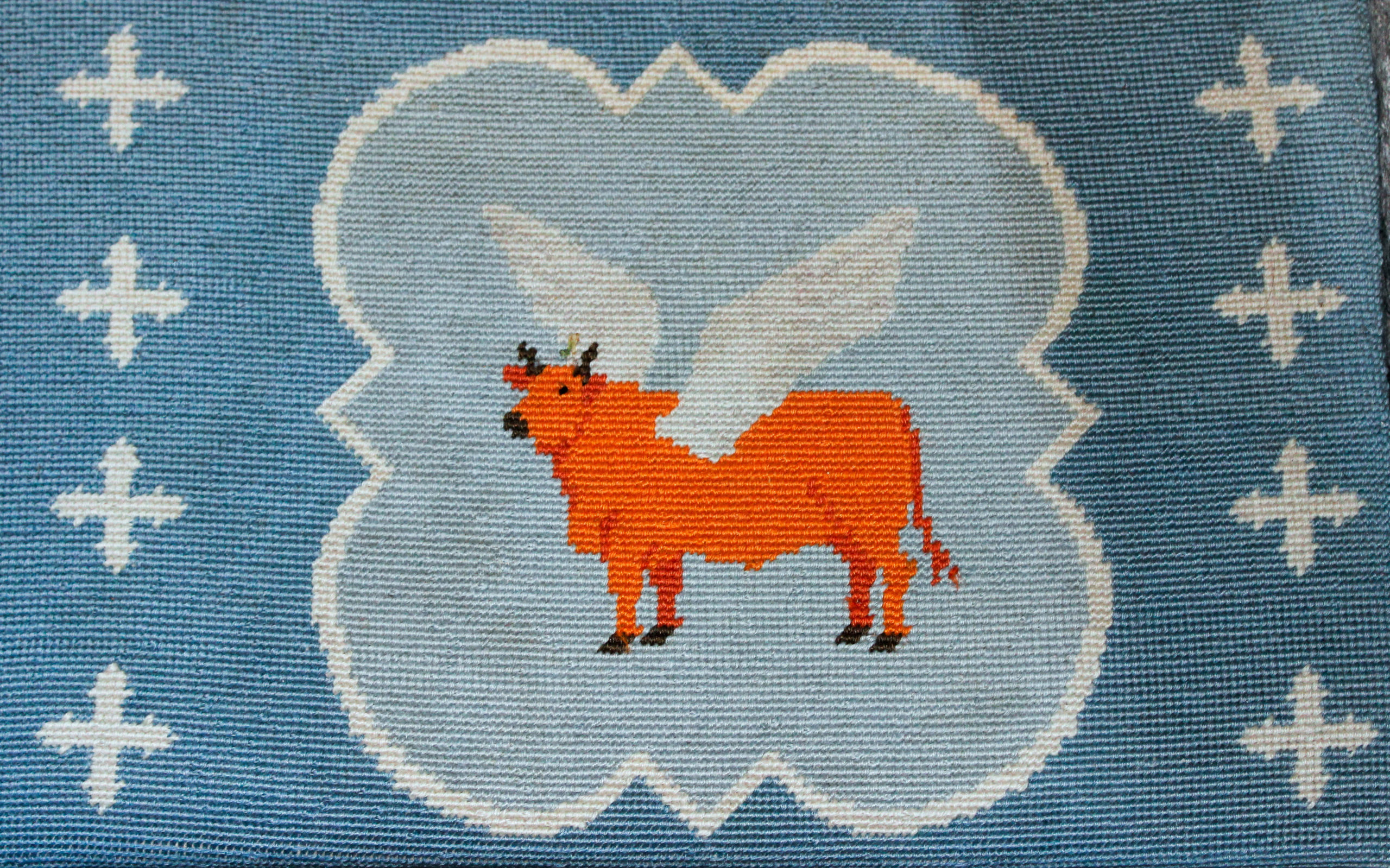
Four Crosses
Durham Red – Liturgically red is used on Pentecost, the flame color typifying the descent of the Holy Spirit, and the martyrs’ days to denote the blood shed for Christ.
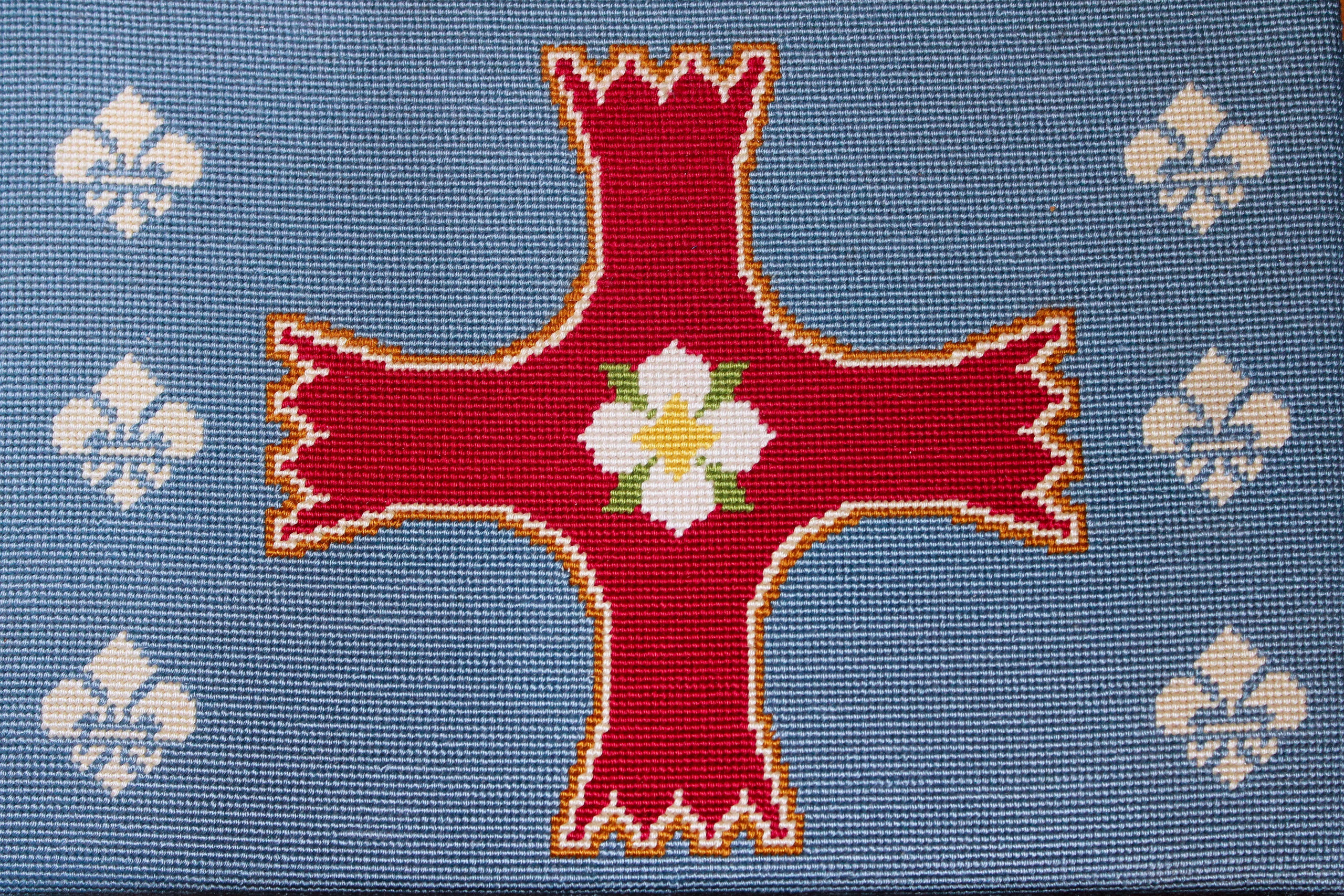
Durham Green – Liturgically, green is used on Sundays between Pentecost and Advent. It denotes plenty, the color of nature. CHI RHO (XP) is an early monogram of Christ being the first two Greek letters of Christ. It was used on the banner of Constantine and in the catacombs.
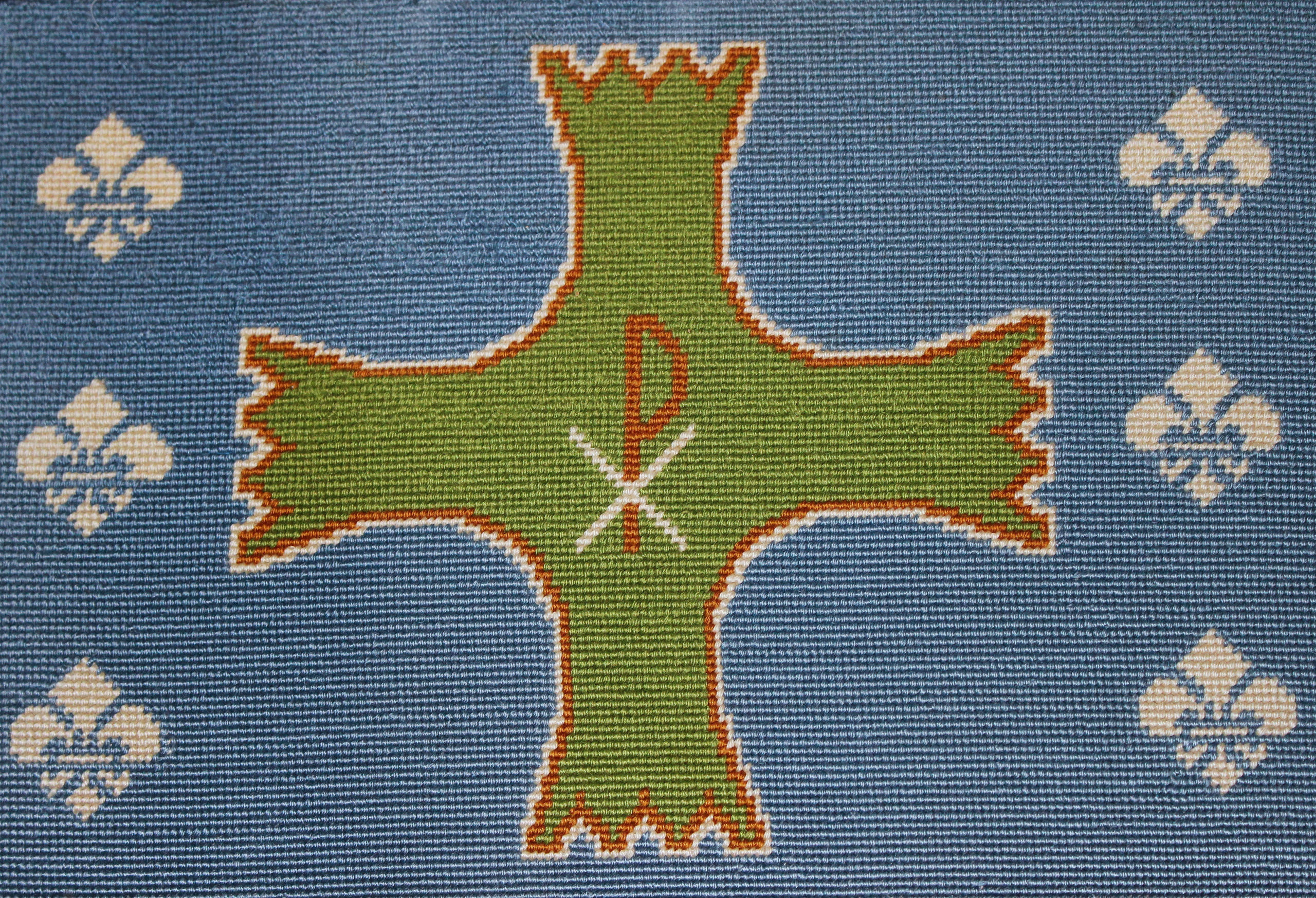
Durham Purple – Liturgically, purple is used during Advent and Lent. It demotes sorrow and penitence as in the penitential preparatory seasons. The dove represents the Holy Spirit, and with the olive branch, symbolizes peace.
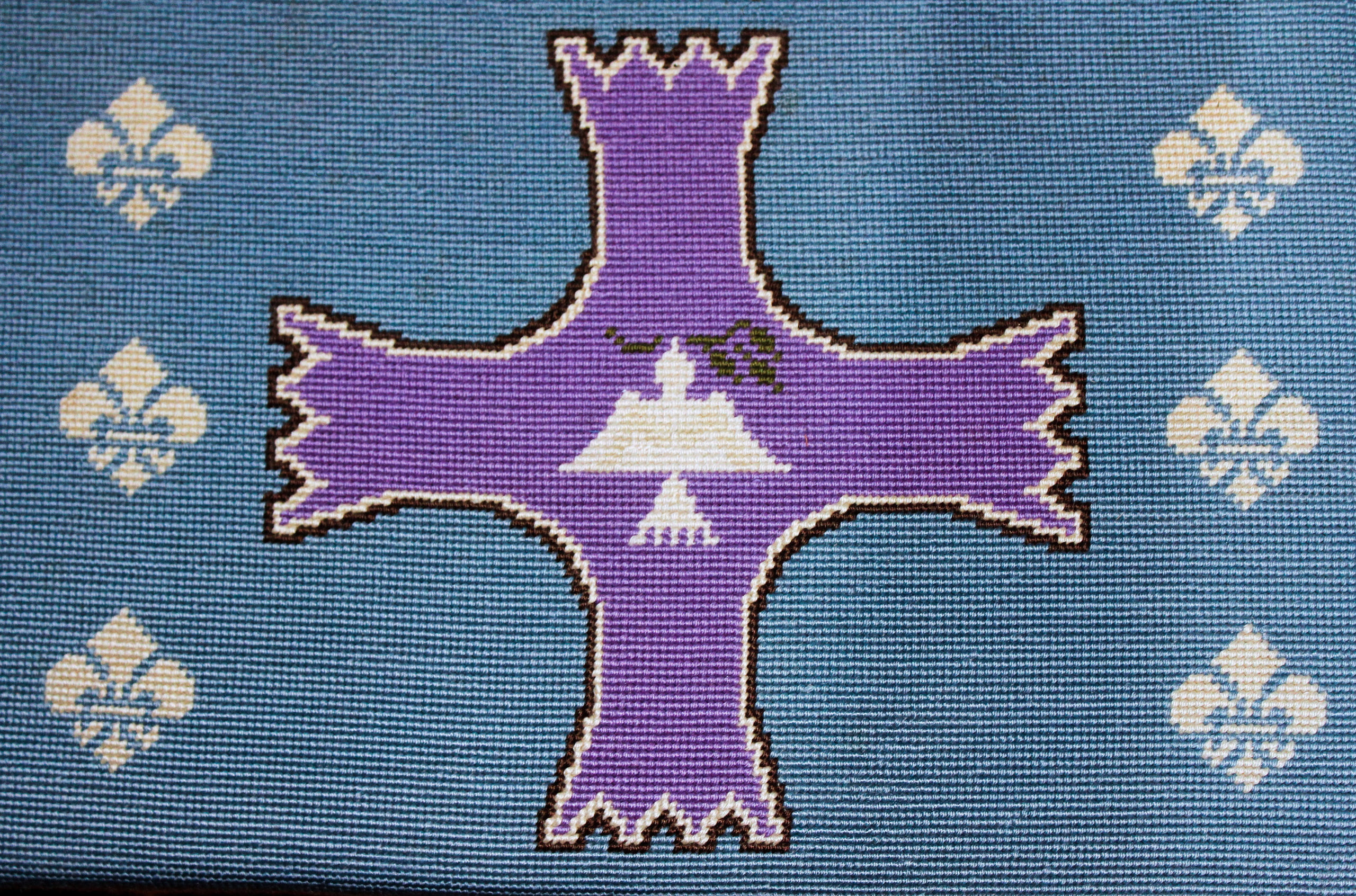
Durham White – Liturgically, white is used at Christmas, Epiphany, Easter and at festivals of saints who were not martyrs. It denotes purity and Joy. The Passion of our Lord is symbolized in the chalice of wine representing the blood of Christ shed for us.
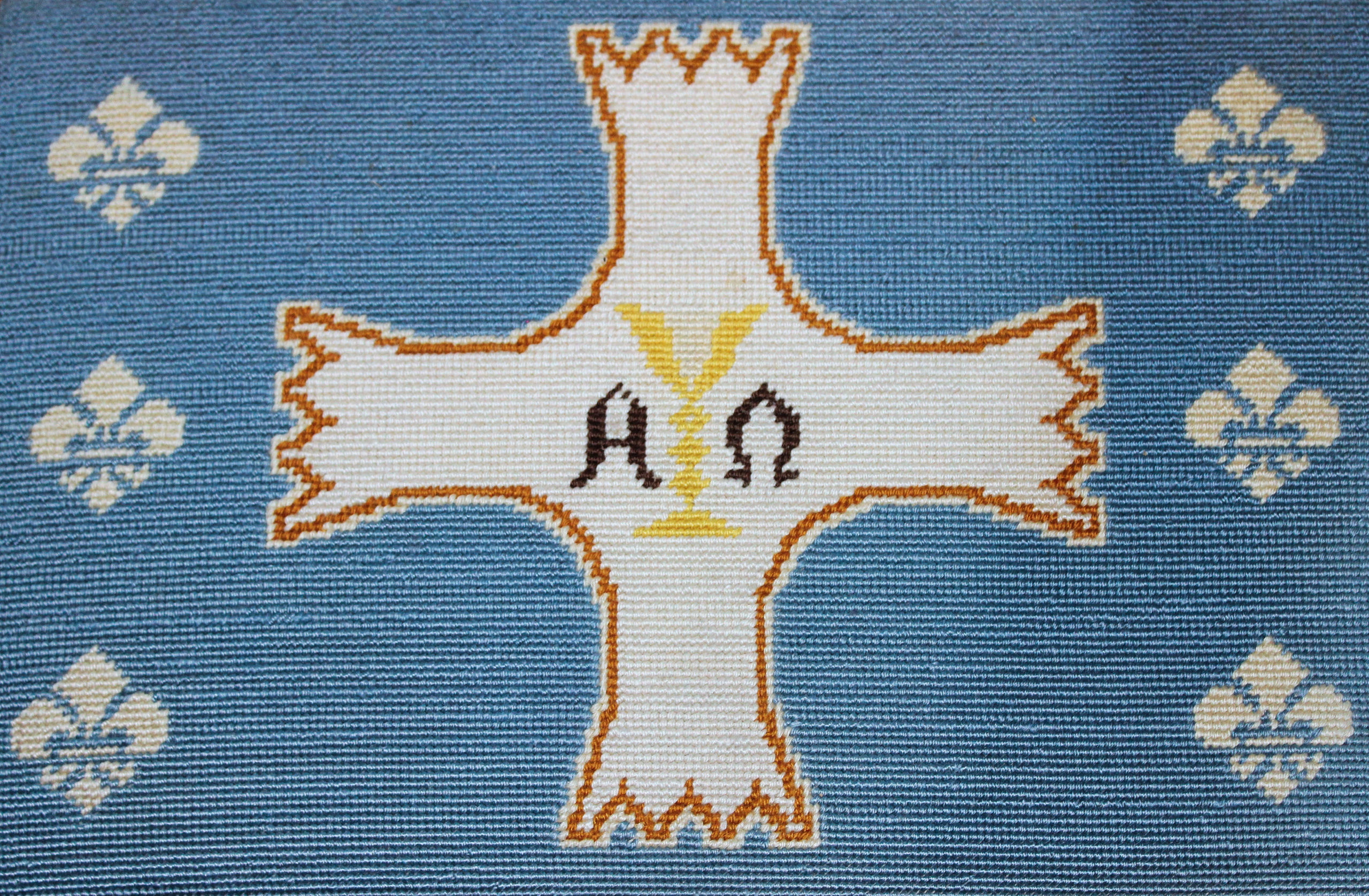
Three Entrances Past the Altar Rail
Canterbury Cross– This design appears on the kneelers at each of the three gates to the altar. It is a traditional design representing the mother church taken from the shield of the See of Canterbury, Canterbury Cathedral, England. IHS from the Latin is variously interpreted to mean In Hoc Signo (In this sign–the cross) or Iesus Hominum Salvator (Jesus Savior of Man). There are 3 kneelers with this design:
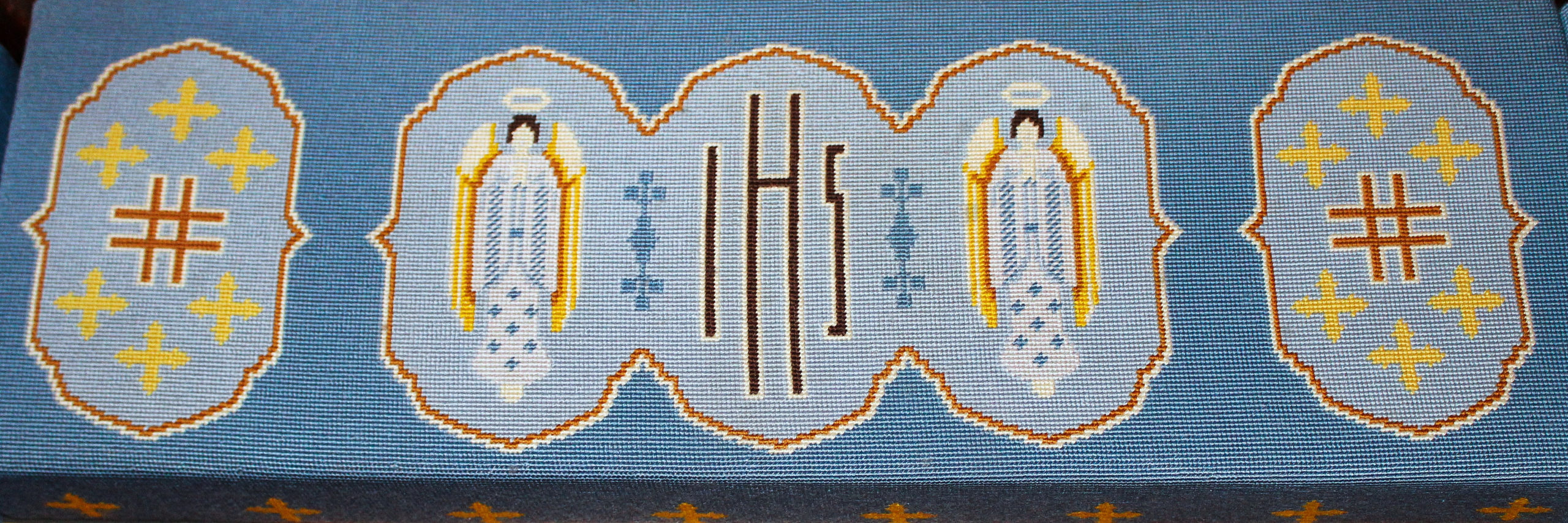
Two Shields
Shield of the Diocese – This design is an adaptation of the Shield of our Diocese. The blue portion with a white star represents the commonwealth of Massachusetts (Taken from the state shield). The center red portion represents the See of London with one of the swords of St. Paul. The three crowns represent old Boston and, spiritually, the Christian virtues of faith, hope and charity. The outer portion, the key, mitre, and crook, were added by Bishop Coburn. They were part of the shield of the first American Bishop, Samuel Seabury. The staff represents leadership, the mitre apostolic succession and the key St. Peter.
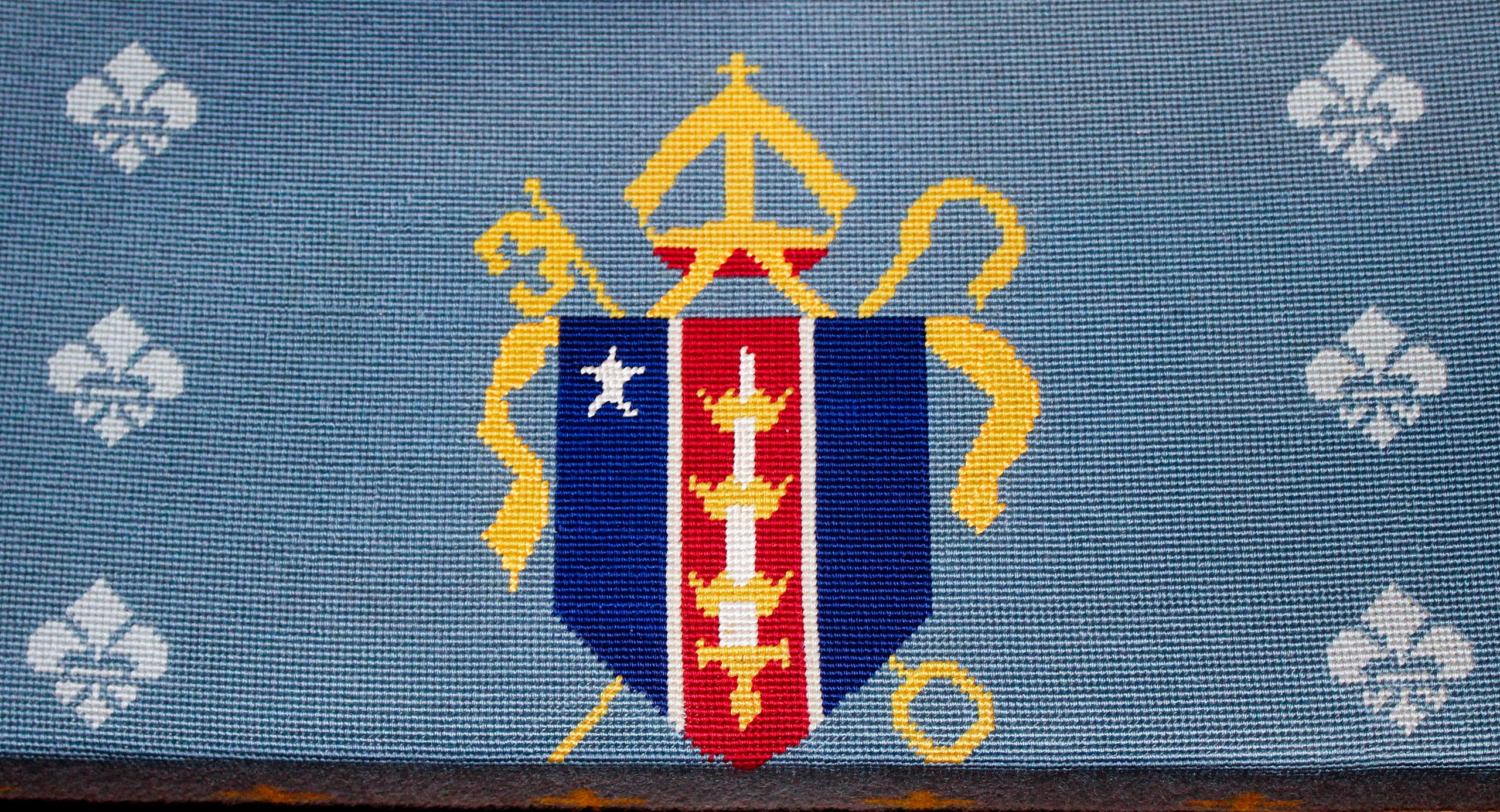
Shield of the Commonwealth of Massachusetts – Tradition for using this symbol in the kneelers comes from its use on the reredos of the chapel altar. The Native American in the center points an arrow downward in peace. The star over his right arm represents Massachusetts as a state. The arm and sword above the shield stand for the state motto “Esne petit placidum sub libertate quietem” (for peaceful conditions under liberty).
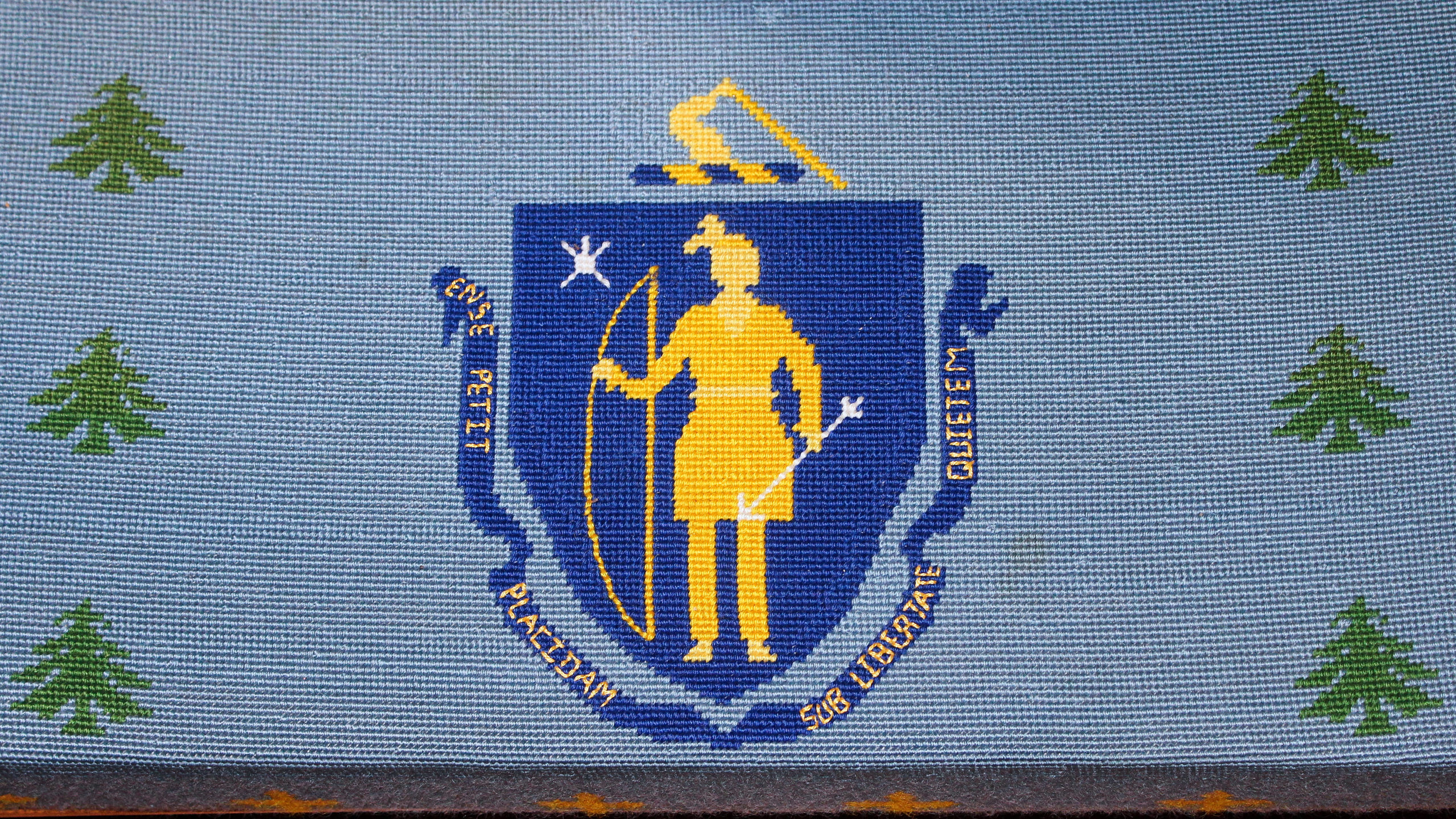
Other Kneelers and Covers
All Saints’ Ancient – This symbol appears on ancient Clog Almanacks almost a thousand years ago. It was carved on November 1st as a symbol to mark the Feast of All Saints. The symbol was used on the cornerstone of the All Saints’ Church study.
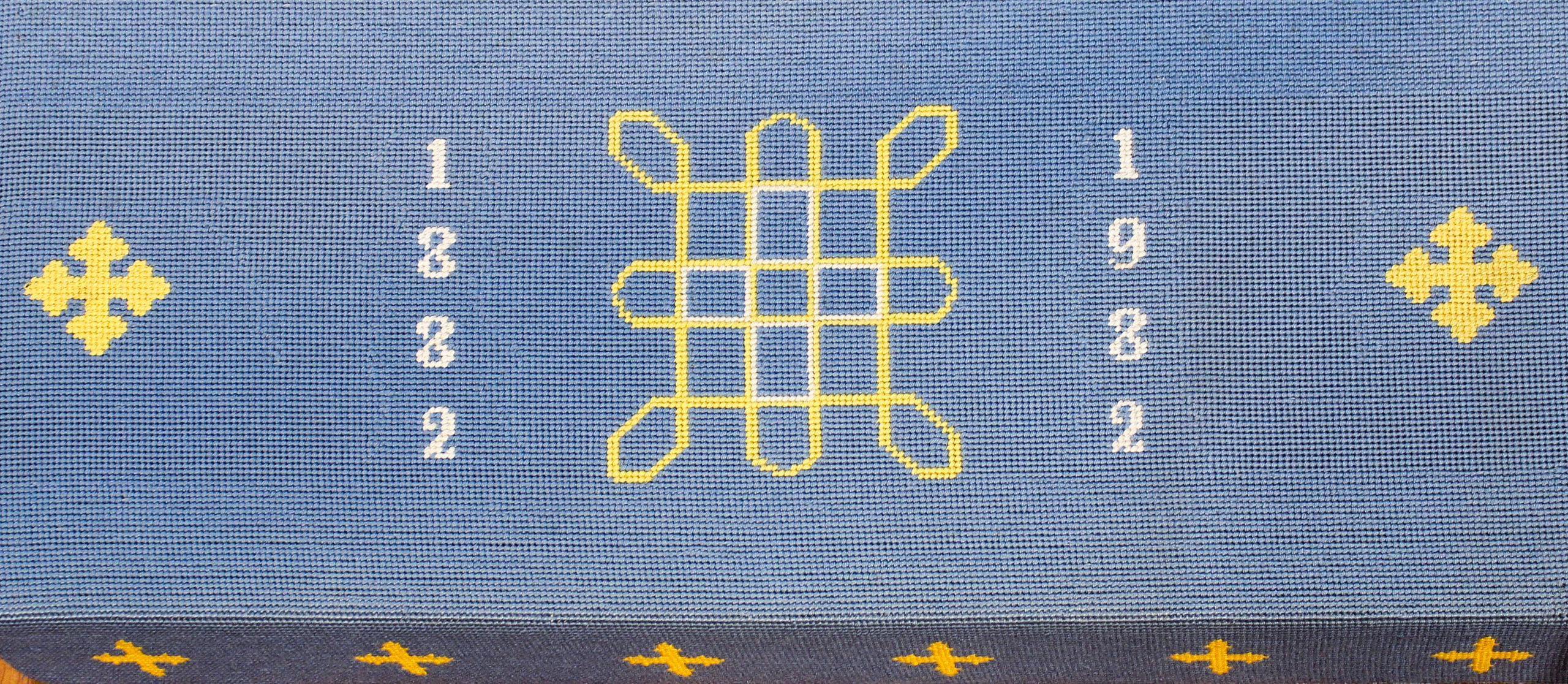
All Saints’ Modern – The crown, used here, represents the reward of the faithful who have overcome the power of death and darkness through their belief in Christ.
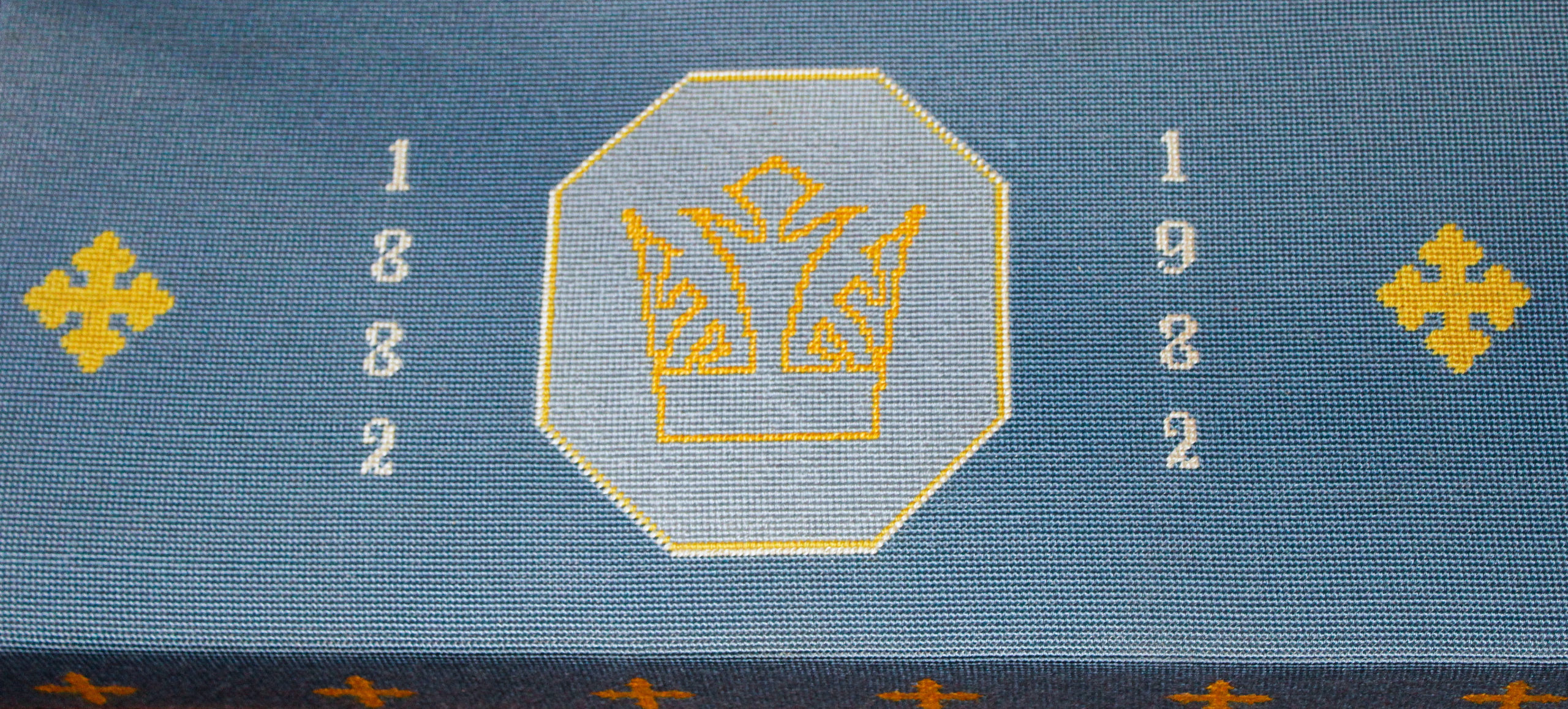
Dove – The dove represents the Holy Spirit and innocence. Jesus told his followers to be “innocent as doves.”
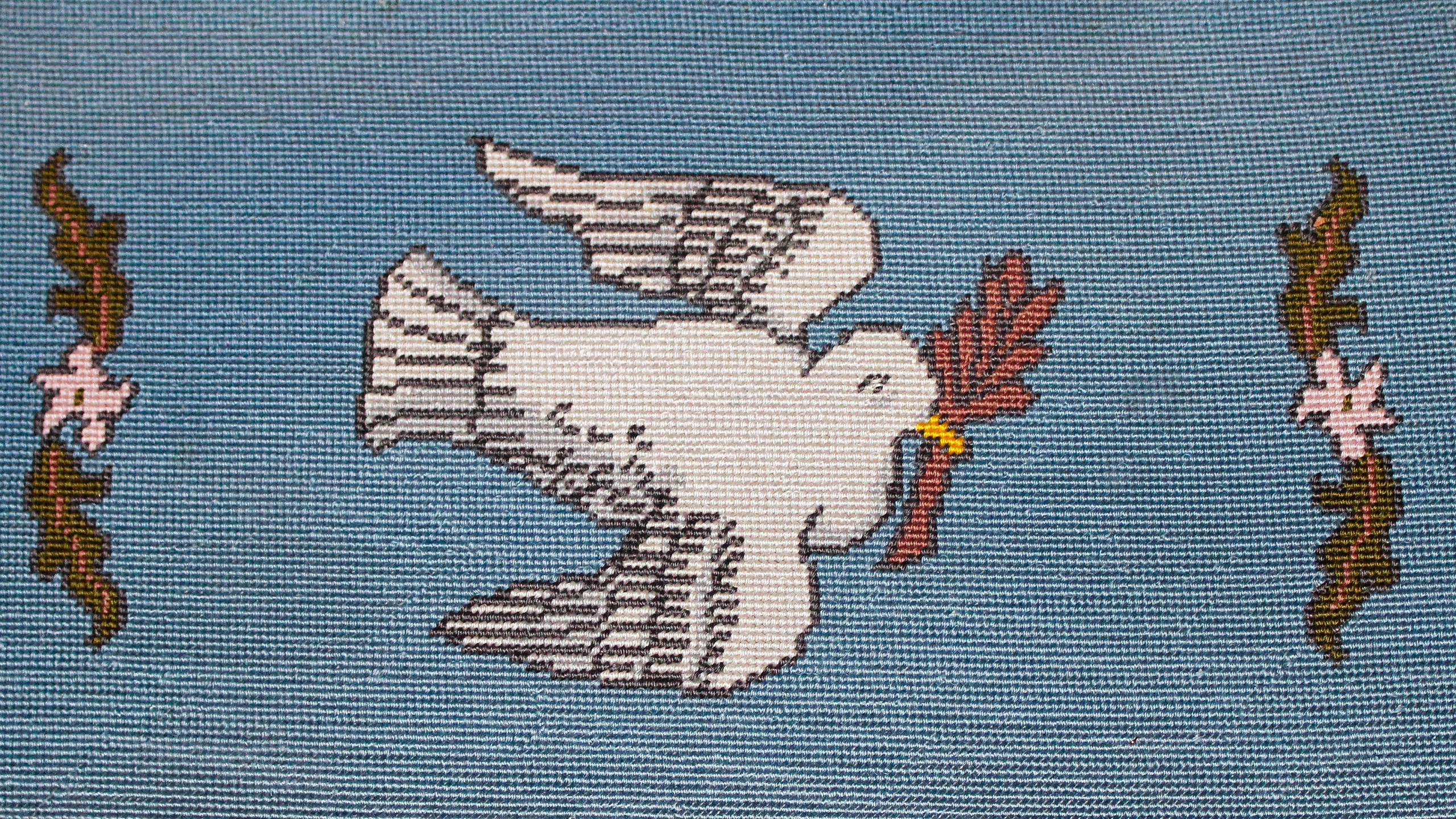
Lamb Standing with Banner of Victory – Jesus became the sacrificial lamb, and this symbol represents the victorious nature of the sacrifice. The “tongue of flame” flowers are reminders of God’s grace and power through the Holy Spirit.
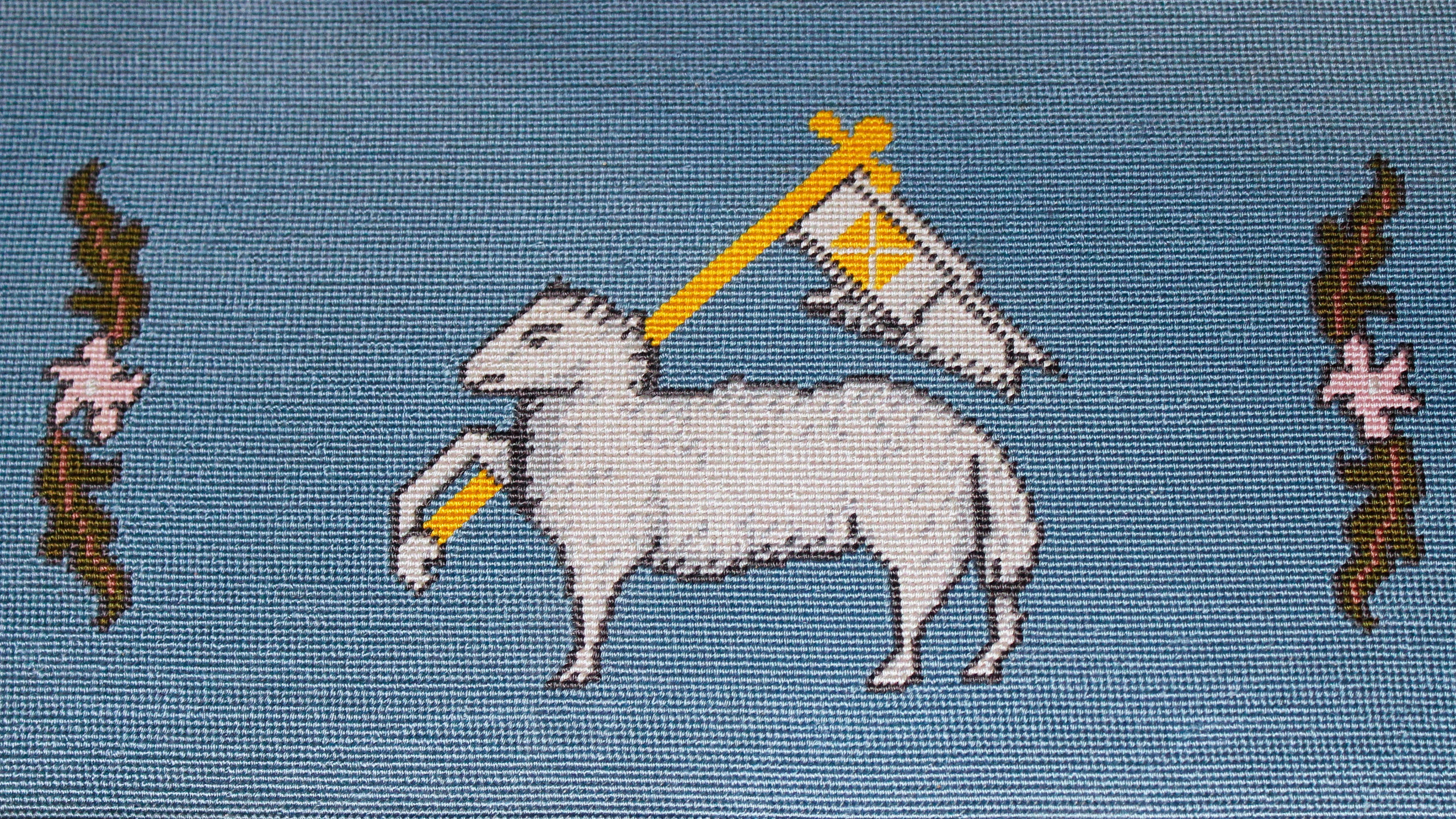
Vine – The vine is used to express the relationship between God and his people: “I am the vine, and you are the branches.”
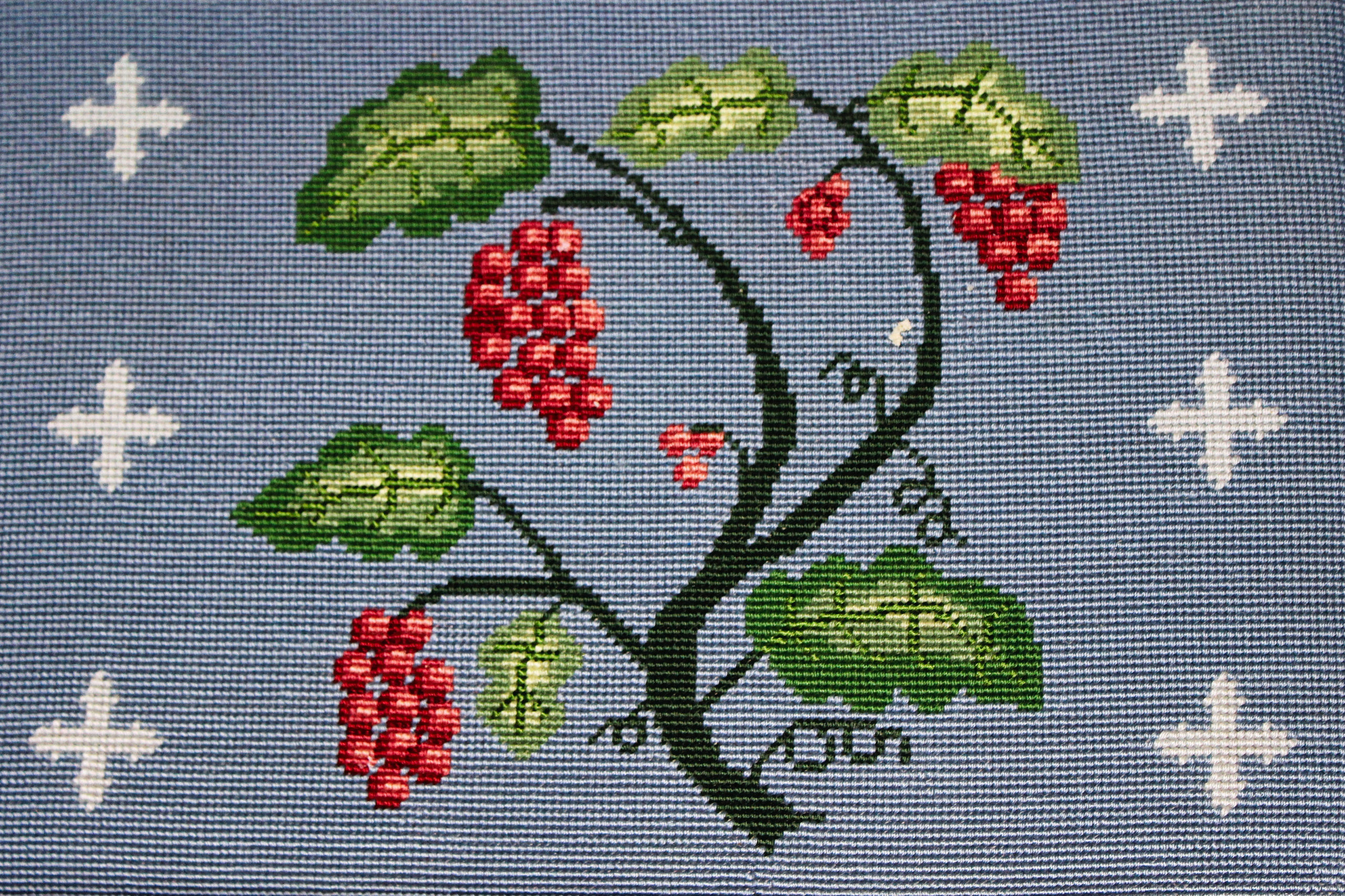
Flowers, Strawberries and Violets – The strawberry is the emblem of the righteous person whose fruits are good works. When shown with other flowers, it represents all the good works of the righteous. The violet is the symbol of humanity and also denotes the humility of the son of God in assuming human form. This design suggests the truly spiritual are humble.
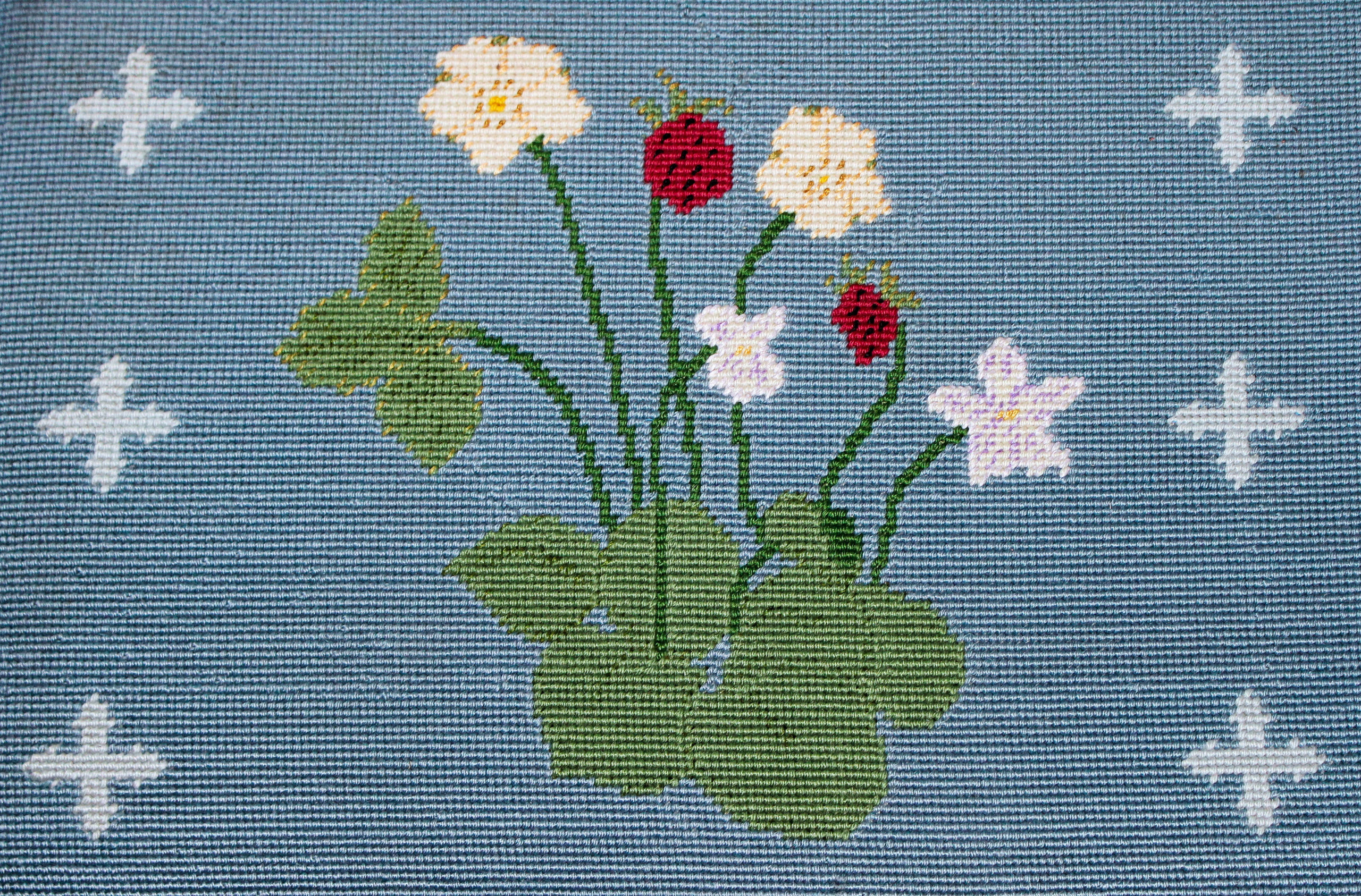
Trinity – Each circle, without beginning or ending, stands for the eternal nature of each one of the three persons of the Trinity – Father, Son and Holy Spirit. The intertwining symbolizes the unity of the Trinity.
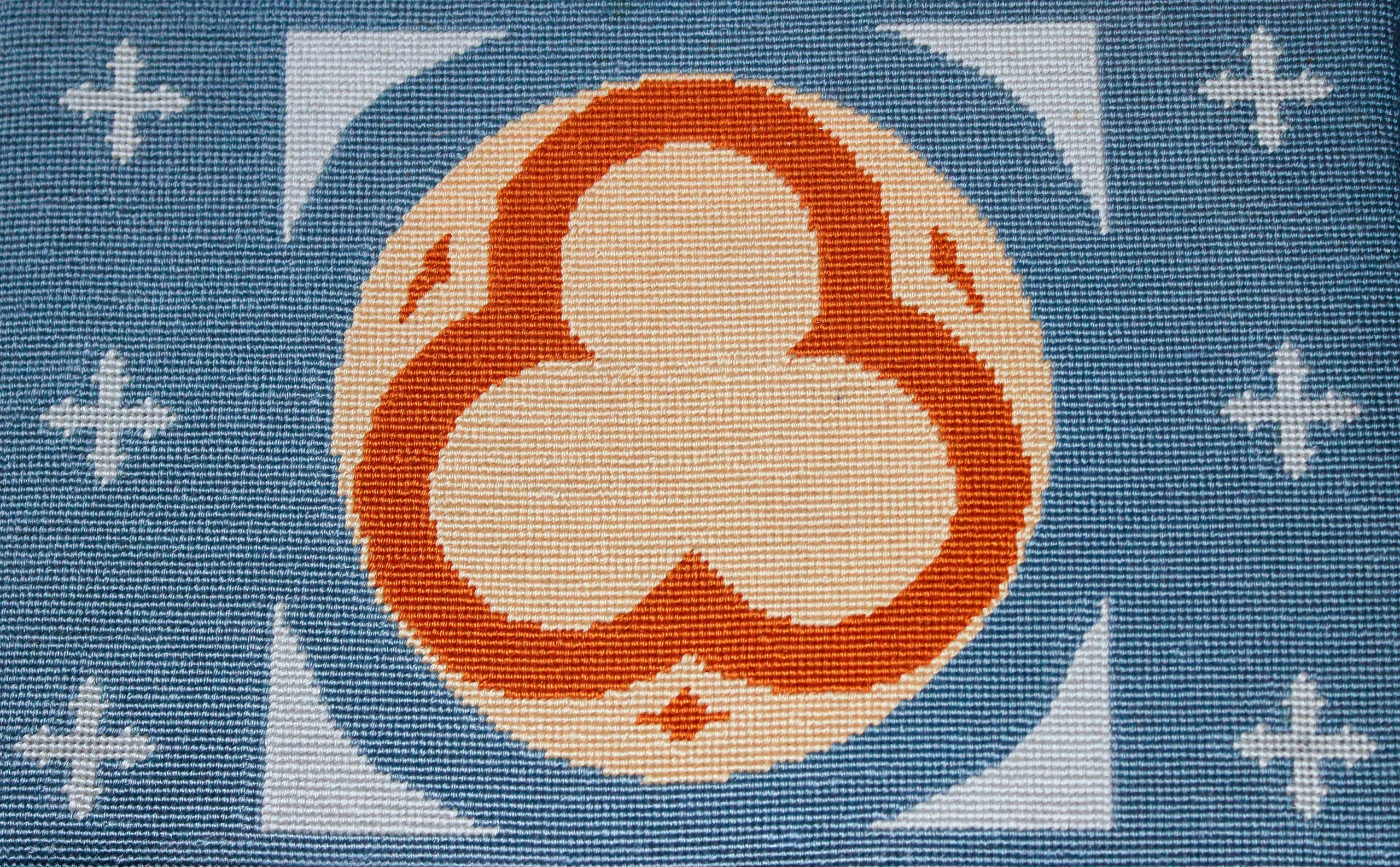
Three Fishes – The fish was one of the earliest Christian symbols being used as a secret sign among persecuted Christians. The Greek word for fish (ichthus) is made up of the first letters of the phrase “Jesus Christ, Son of God, Savior.” Three fishes together in one continuous design represent the three parts of the eternal Trinity and the oneness of God.
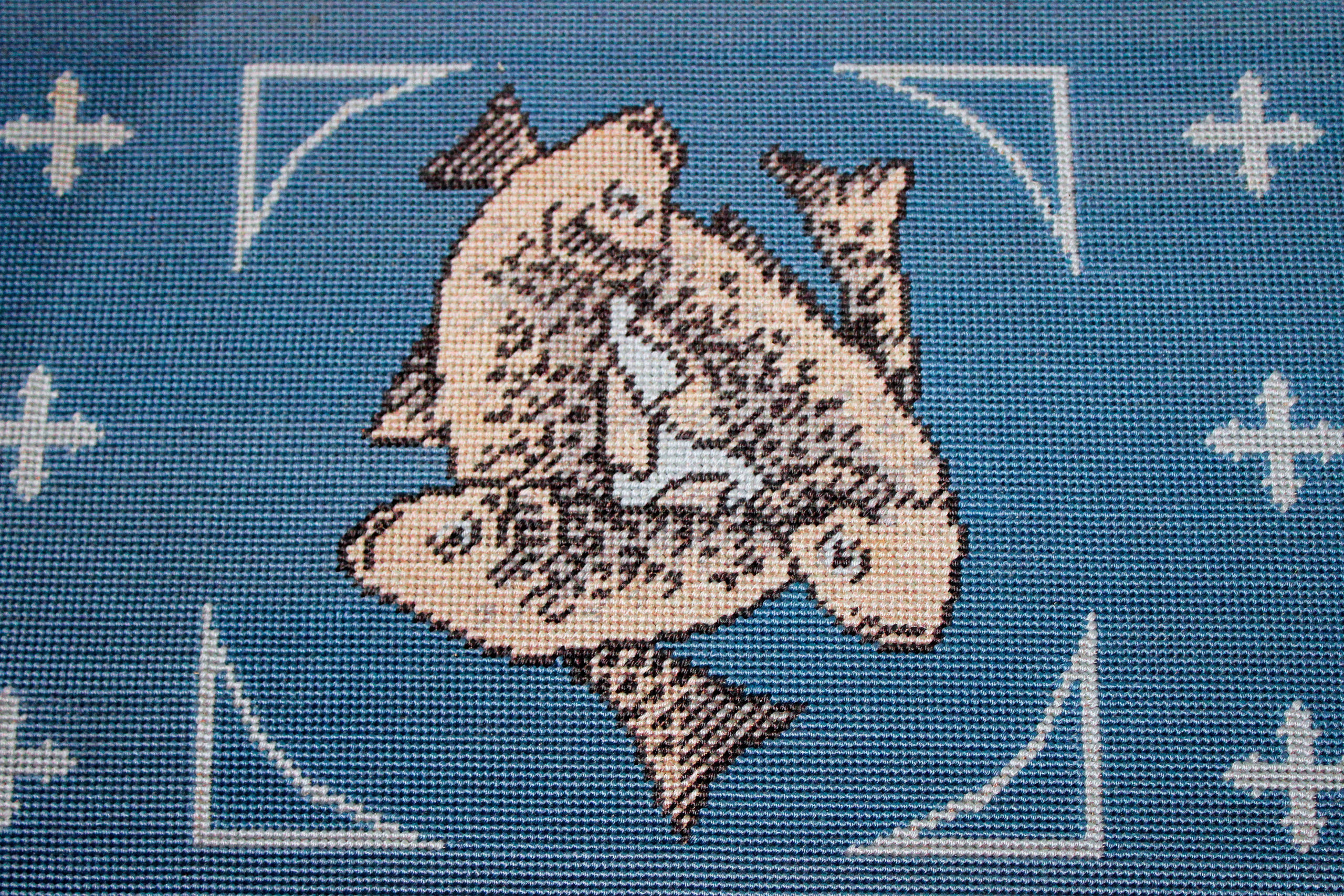
Seats – These designs incorporate many Crosses and the Canterbury See shield.
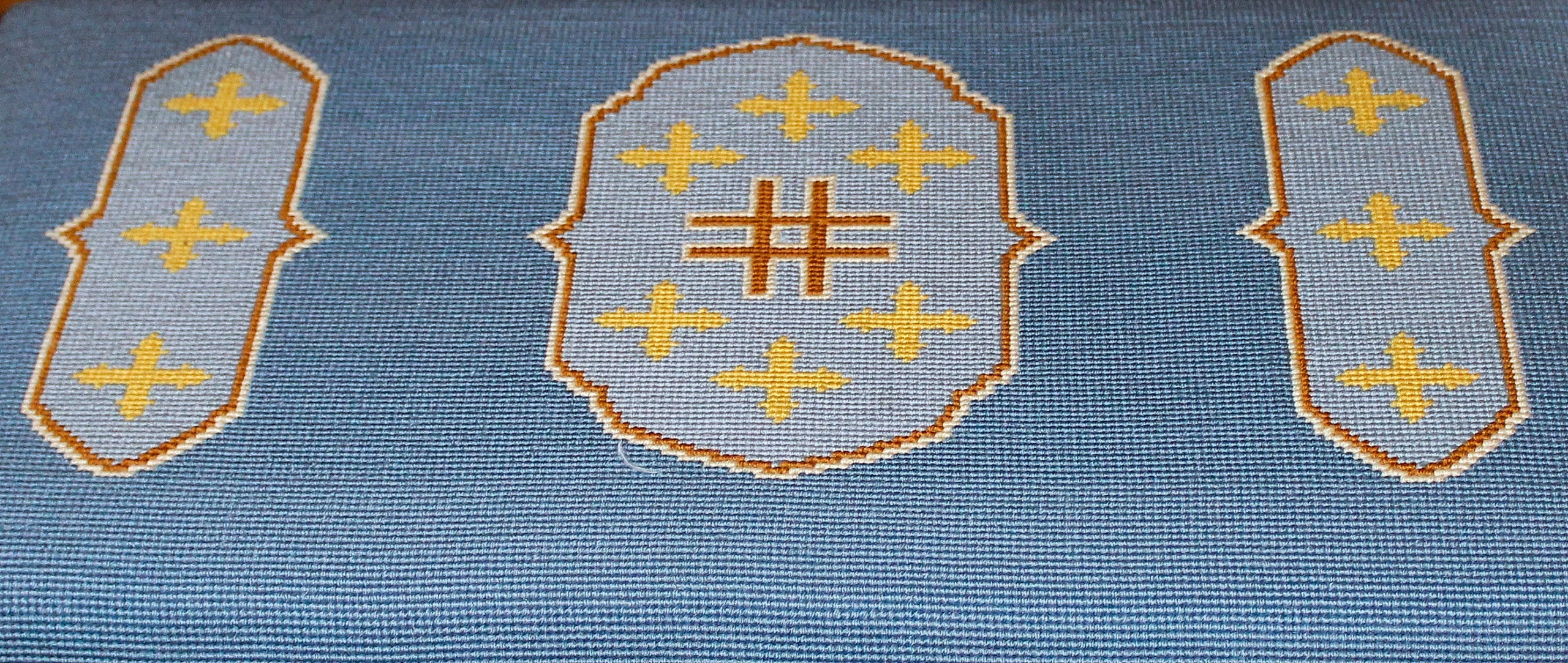
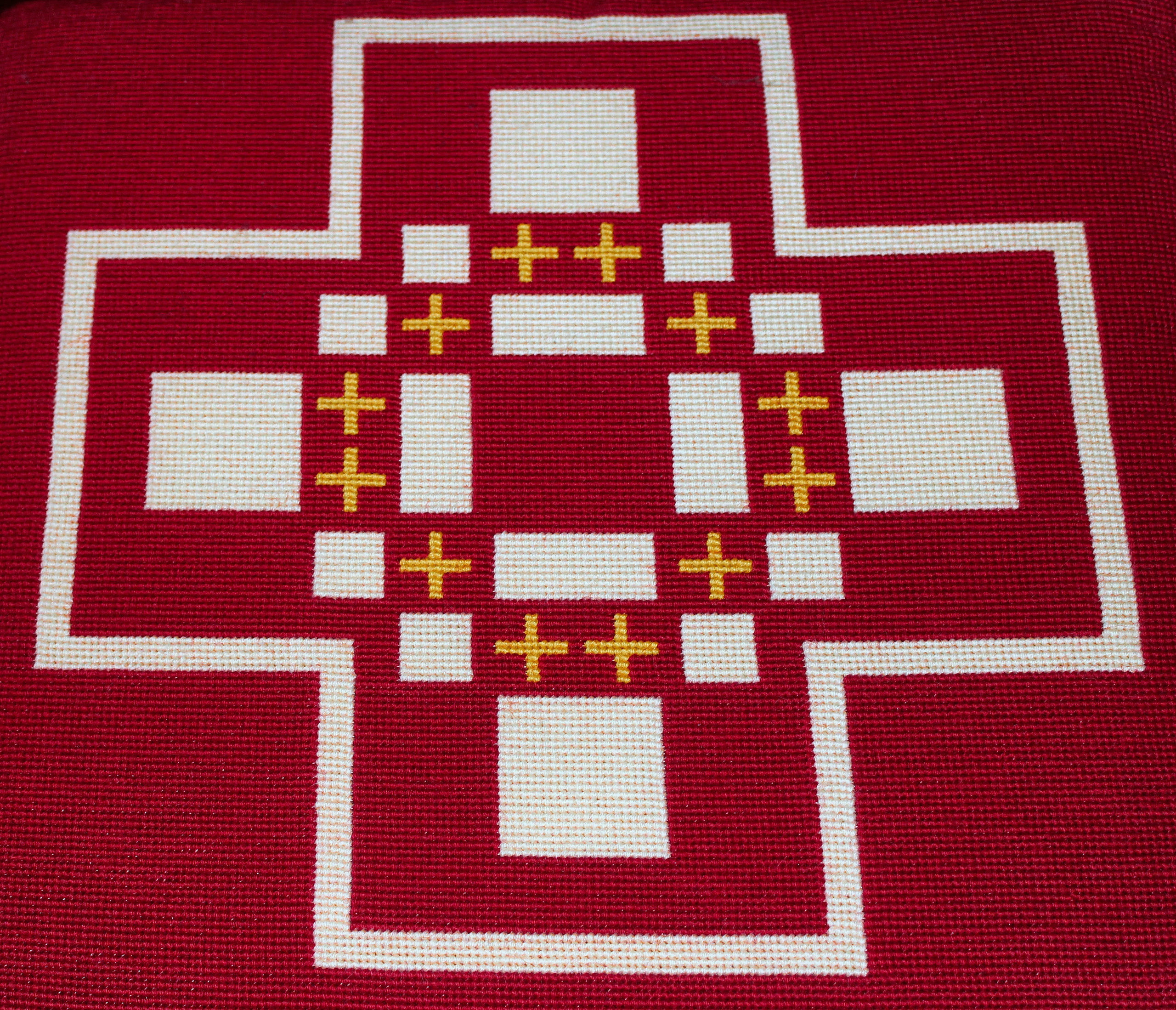
Baptism Side Table – This small stitching is glass covered and includes an IHS symbol. IHS from the Latin is variously interpreted to mean In Hoc Signo (In this sign–the cross) or Iesus Hominum Salvator (Jesus Savior of Man).
